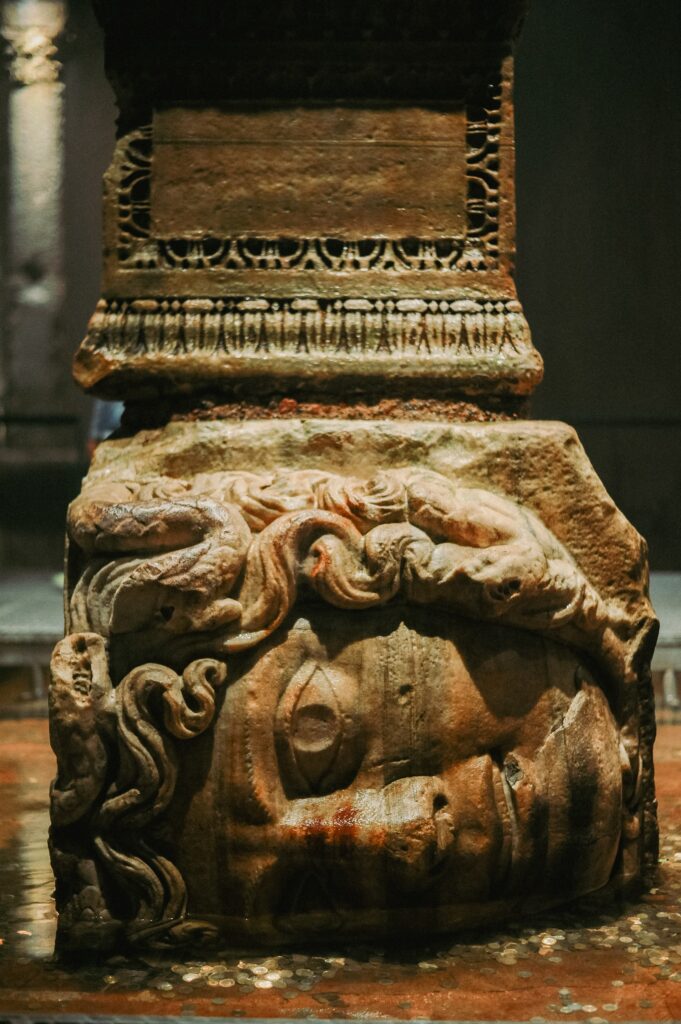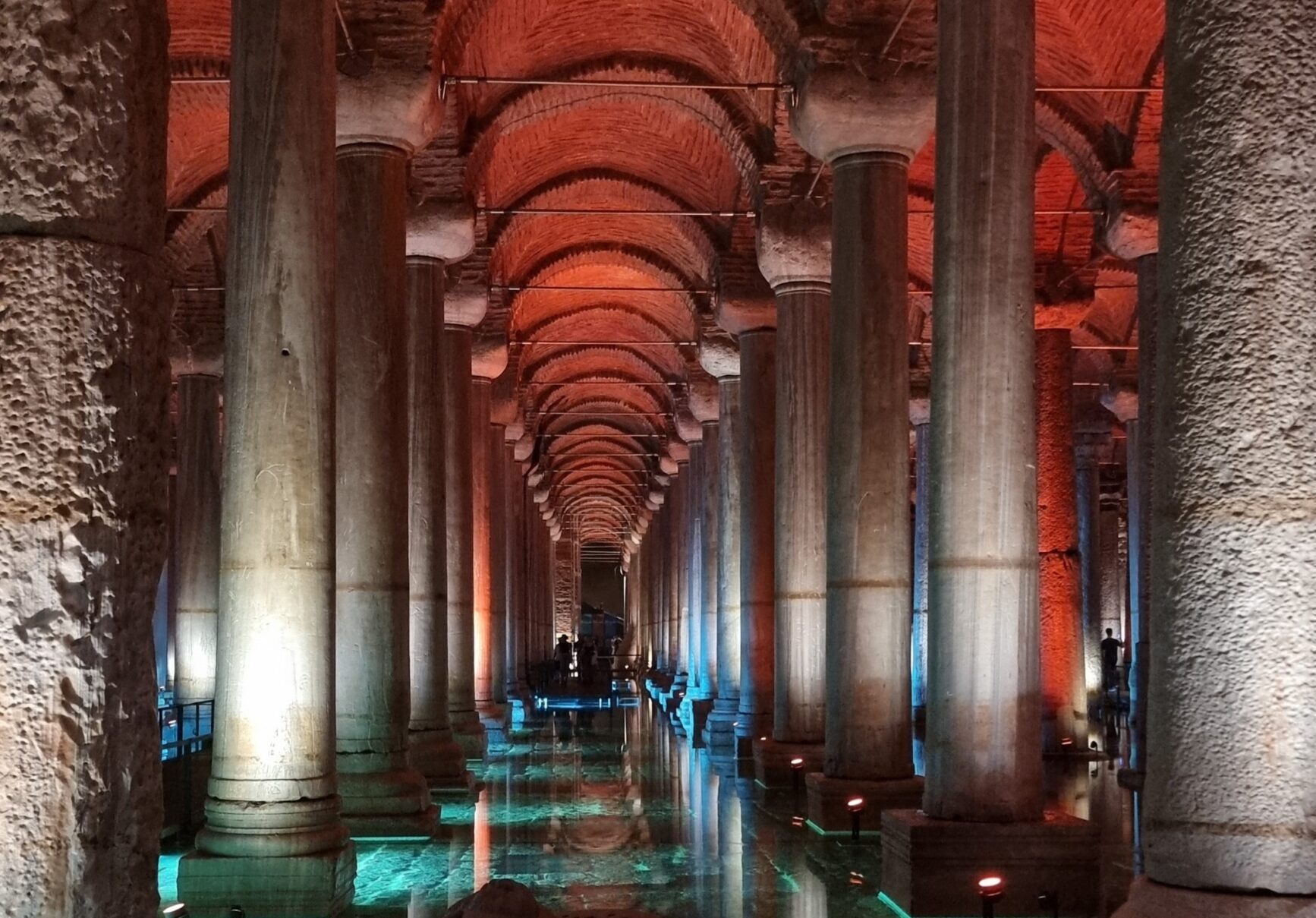Basilica Cistern is famous for being one of the most mysterious touristic destinations in Istanbul, and in all of Turkey. This curious underground cistern is almost as old as Hagia Sophia, it was built in the 6th century AD during the rule of the Byzantine emperor Justinian I and was never collapsed or rebuilt. Basilica Cistern is also one of the largest Roman constructions to make it to our day.
Covering an area of 9800 m2 and with a capacity of approximately 80,000 m3 of water, Basilica Cistern is the largest known underground cistern in the world. The building is colossal, it has 336 unique columns, each slightly, some entirely different than the other, and some even with mythical goddess faces such as the famous Medusa heads. Top 5 Basilica Cistern Tips

Inside the Basilica Cistern Museum
When you enter the Basilica Cistern, you find yourself at the top of the building facing down to this humongous construction with its hundreds of ancient columns, dim lights reflecting from the water and you immediately feel the switch in ambiance. You’re no longer in the sunshine realm, you’re now experiencing the underworld of Istanbul.
Basilica Cistern isn’t just a large underground reservoir, it is a manifestation of thousands of years old Greek and Roman history, it is an ancient gallery of mythological temple columns and pedestals, some dating more than 2000 years. But why are the columns older than the building itself?
Most of the columns, column capitals, and pedestals were brought from even older, ancient Greek and Roman temples and sites that were not used anymore. Because of this reason, the whole Basilica Cistern experience is a lot richer and more intense in comparison to other cisterns because the scenery does not repeat itself. The most mysterious part of the Basilica Cistern is in the corner of the building: the Medusa heads.
One sideways, one upside down, two large Medusa heads reveal themselves in the darkest corner of the Basilica Cistern and leave its visitors in awe – how and why these Medusa heads were brought here? Why are there not straight?
Is Medusa Burried In Basilica Cistern?
Although some might assume this has a mythological explanation, the Medusa heads were actually buried in the depths of the Basilica Cistern for a far more interesting reason: the symbolic burial of the fallen Goddess. How Do I Go To the Basilica Cistern

You see, this was a time when Hagia Sophia was already built, Constantine has already made peace with the Church two centuries ago and majority of the people of Constantinople did not believe in mythological gods or goddesses anymore. Thus the only suitable place for an ancient temple block with the depiction of the wrong deity on it would have been the deepest, darkest part of an underground cistern, buried, or maybe even symbolically “drowned” in water, forever.
In conclusion, the Basilica Cistern is definitely a must-visit, must-see location in Istanbul and should absolutely be included in your list of places to visit as this may be one of the most ambient and mysterious historical sites you’ve ever been to.
Book a guided tour to Basilica Cistern and skip the long ticket lines



